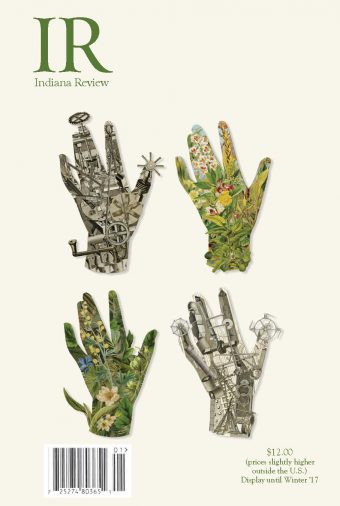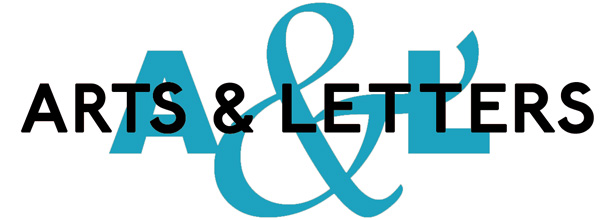 Indiana Review, Volume 39, Issue 1
Indiana Review, Volume 39, Issue 1 Since I’m a Michigan girl in central Georgia, of course I’d want to review something that feels a bit like home. I was also drawn to the 2016 Half K Prize judge, Aimee Nezhukumatatil, whose name has been floating around my literary social circles a lot in the last few years. Nezhukumatatil’s work has granted her an NEA Fellowship and a Pushcart Prize, among other honors. While her list of accomplishments is intimidating, her poetry is not; she’s often acclaimed for the simplicity and accessibility of her poems.
This issue is bisected by the METALLIC GRIT Special Folio, glossy pages highlighting prose and fiction that defines what “grit” means to the editors. Here you can read a Half K Prize finalist, “Adoration of the J Girls,” by Rochelle Hunt; a poem by Oliver de la Paz titled “Autism Screening Questionnaire: Social Interaction Difficulties”; and “Understory” by Ethan Feuer, a mixed media piece with a guide to show readers points of connection between his numbered sections of poetic line.
Outside of the Metallic Grit Folio, I was intrigued by Neel N. Patel’s story “The Taj Mahal.” The story revolves around an unreliable first-person narrator named Sabrina, who has recently lost her parents and her job as an OB/GYN. After returning to her empty childhood home, Sabrina goes to an old friend’s Christmas party to reconnect. While going out to smoke a cigarette, the old friend’s boyfriend decides to smoke with her. In an alcohol-inspired decision, the unlikely pair go back to visit Sabrina’s childhood home. The story, full of unlikely turns, is soft and believable. It asked me to take notice of unresolved grief and how it embodies itself. While an incredibly funny story, it is also terribly human, inviting readers inside a world completely like and unlike our world.
Other noteworthy poets and writers in this journal include sam sax, whose debut poetry collection, Madness, was published by Penguin Random House in September. In his poem “Mass Hysteria” sax challenges how we see what we see. Each line speaks to a binary that dwells inside all of us: a binary where we are good or bad, where we run or we fight. sax takes many different worlds and weaves them together so we see both shame and beauty in ourselves; he plays with this binary and breaks the expectations of it all at once. Alongside are poems by Ash Goedker, whose work explores humanity, childhood, and Babe the Blue Ox.
Despite an eclectic array of subjects, this issue of Indiana Review is in conversation with itself—each story, memory, and poem informing the others and enriching the reading experience. In print since 1977, Indiana Review has been a sustaining force for great work in our ever-changing literary landscape. If you’d like to pick up a copy, you can find it here https://indianareview.org/the-magazine/. *
Reviewed by Danielle Johnson








One Response to Indiana Review, Volume 39, Issue 1